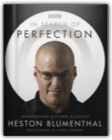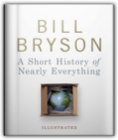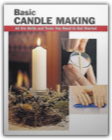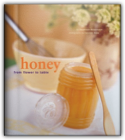|
The Story of Rats

In Search of Perfection

A Short History of Nearly Everything

The God Delusion

Basic Candle Making

The Dangerous Book for Boys

Inside The Dangerous Book for Boys Figure 8 Knot Sheet Bend Knot The Battle of Waterloo Questions for Conn Iggulden Conn and Hal Iggulden are two brothers who have not forgotten what it was like to be boys. Conn taught for many years before becoming one of the most admired and popular young historical novelists with his Emperor series, based on the life of Julius Caesar, and his newly embarked series on Genghis Khan, while Hal is a theater director. We asked Conn about their collaboration. Amazon.com: It's difficult to describe what a phenomenon The Dangerous Book for Boys was in the UK last year. When I would check the bestseller list on our sister site, Amazon.co.uk, there would be, along with your book, which spent much of the year at the top of the list, a half-dozen apparent knockoff books of similar boy knowledge. Clearly, you tapped into something big. What do you think it was? Iggulden: In a word, fathers. I am one myself and I think we've become aware that the whole "health and safety" overprotective culture isn't doing our sons any favors. Boys need to learn about risk. They need to fall off things occasionally, or—and this is the important bit—they—they'll take worse risks on their own. If we do away with challenging playgrounds and cancel school trips for fear of being sued, we don't end up with safer boys—we end up with them walking on train tracks. In the long run, it's not safe at all to keep our boys in the house with a Playstation. It's not good for their health or their safety. You only have to push a boy on a swing to see how much enjoys the thrill of danger. It's hard-wired. Remove any opportunity to test his courage and they'll find ways to test themselves that will be seriously dangerous for everyone around them. I think of it like playing the lottery—someone has to say "Look, you won't win—and your children won't be hurt. Relax. It won't be you." I think that's the core of the book's success. It isn't just a collection of things to do. The heroic stories alone are something we haven't had for too long. It isn't about climbing Everest, but it is an attitude, a philosophy for fathers and sons. Our institutions are too wrapped up in terror over being sued—so we have to do things with them ourselves. This book isn't a bad place to start. As for knockoff books—great. They'll give my son something to read that doesn't involve him learning a dull moral lesson of some kind—just enjoying an adventure or learning skills and crafts so that he has a feeling of competence and confidence—just as we have. Amazon.com: You made some changes for the U.S. edition, and I for one am sorry that you have removed the section on conkers, if only because it's such a lovely and mysterious word. What are (or what is) conkers? Iggulden: Horse chestnuts strung on a shoelace and knocked against one another until they shatter. In the entire history of the world, no one has ever been hurt by a conker, but it's still been banned by some British schools, just in case. Another school banned paper airplanes. Honestly, it's enough to make you weep, if I did that sort of thing, which I try not to. Reading Jane Austen is still allowed, however. Amazon.com: What knowledge did you decide was important to add for American boys? I notice in both editions you have an excellent and useful section on table football, as played with coins. Is paper football strictly an American pastime? I'm not sure I could have gotten through the fourth grade without it. Iggulden: I like knowing the details of battles, so Gettysburg and the Alamo had to go in, along with the Gettysburg address, stickball, state capitals, U.S. mountains, American trees, insects, U.S. historical timelines, and a lot of others. Navajo code talkers of WWII is a great chapter. It probably helps that I am a huge fan of America. It was only while rewriting for the U.S. that I realized how many positive references there already are. You have NASA and NASA trumps almost anything. As for paper football, ever since I thought of putting the book together, people keep saying things like "You have rockets in there, yes? Everyone loves rockets!" Paper football is the first American one, but there will be many others. No book in the world is long enough to put them all in—unless we do a sequel, of course. Amazon.com: Do you think The Dangerous Book for Boys is being read by actual boys, or only by nostalgic adults? Have you seen boys getting up from their Xboxes to go outside and perform first aid or tan animal skins or build go-carts? Iggulden: I've had a lot of emails and letters from boys who loved the book—as well as fathers. I've had responses from kids as young as ten and an old man of 87, who pointed out a problem with the shadow stick that we've since changed. The thing to remember is that we may be older and more cynical every year, but boys simply aren't. If they are given the chance to make a go-cart with their dad, they jump at it. Mine did. Nothing gives me more pleasure than to know the book is being used with fathers and sons together, trying things out. Nothing is more valuable to a boy than time with his dad, learning something fun—or something difficult. That's part of the attitude too. If it's hard, you don't make it easy, you grab it by the throat and hang on for as long as it takes. The book is often bought by fathers, of course. Their sons don't know Scott of the Antarctic is a great adventure story. How could they if it isn't taught any more? Good, heroic stories don't appear much in modern school curriculums—and then we wonder why boys don't seem interested. Amazon.com: And finally, on to the important questions: Should Pluto still be a planet? And what was the best dinosaur? Iggulden: Pluto is a planet. I know there are scientists who say it isn't, but it's big enough to be round and it has a moon, for crying out loud. Of course it's a planet. Give it ten years and they'll be agreeing with me again. As for the best dinosaur, it depends what you mean by best. For sheer perfection, it probably has to be the shark and the crocodile. Modern ones are smaller but their record for sheer survival is pretty impressive. I only hope humanity can do as well. The only thing that will stop us is worrying too much. The Skeptic's Guide to the Paranormal

Great Mythconceptions

It Ain't Necessarily So... Bro

Honey: From Flower to Table

The Full Facts Book of Cold Reading

The Demon Haunted World

Why People Believe Weird Things

The 60 Greatest Conspiracies of All Time

The Bee Book

|


 Made with Delicious Library
Made with Delicious Library